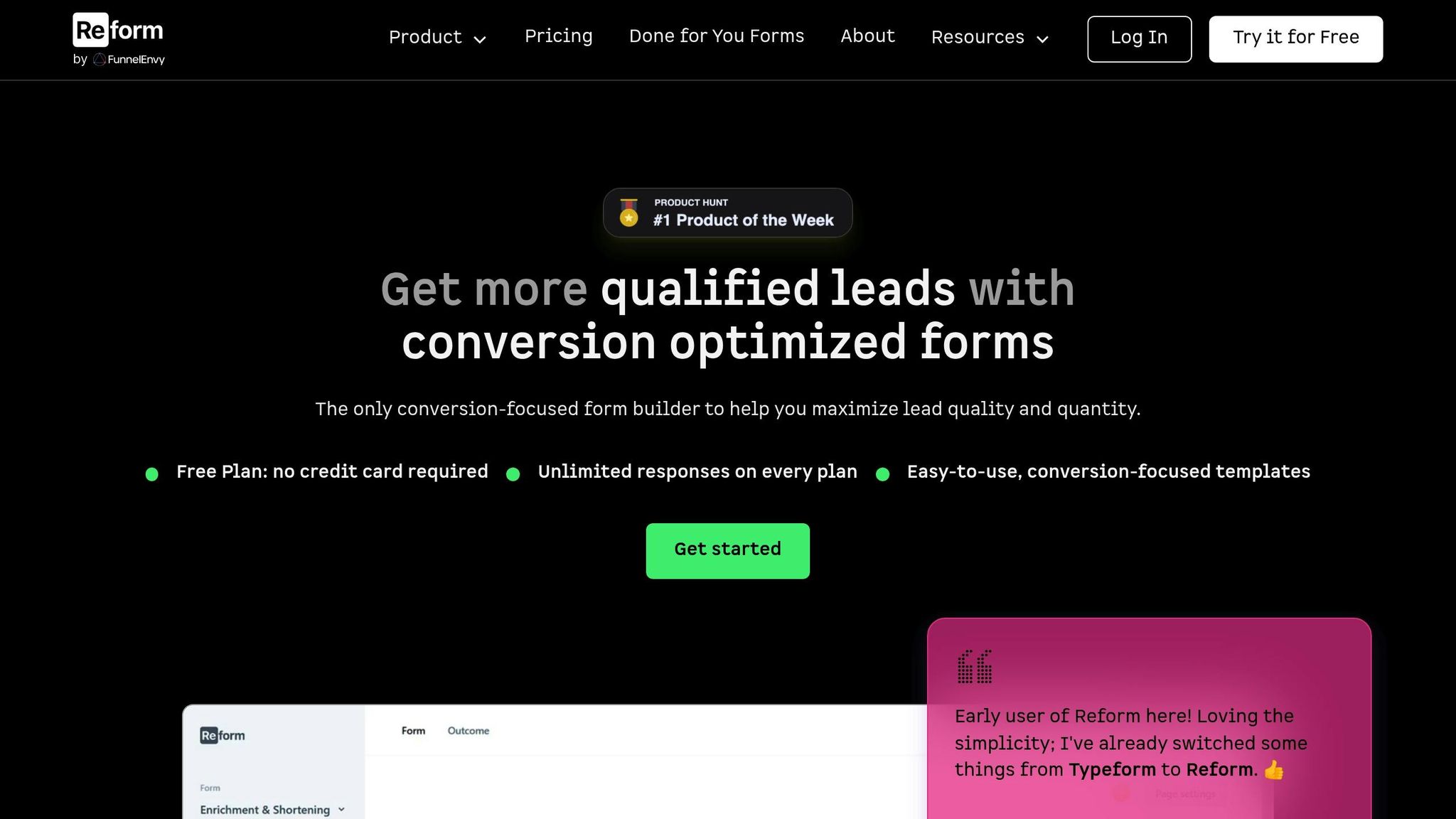Top Legitimate Interest Use Cases in Marketing

Legitimate interests under GDPR allow businesses to process personal data for valid reasons without explicit consent. For marketers, this means you can engage in certain activities - like direct marketing to current customers - if you meet strict compliance standards. Here's what you need to know:
- What It Covers: Direct marketing, fraud prevention, and internal data sharing within corporate groups.
- The Three-Part Test: Identify your interest, prove data use is necessary, and balance it against individual rights.
- Key Compliance Steps: Conduct a Legitimate Interest Assessment (LIA), offer opt-out options, and maintain transparent privacy policies.
This approach isn't a shortcut; it requires thorough evaluation and documentation. When done right, legitimate interests can support marketing goals while respecting privacy laws.
Ep. 2. Legitimate Interest Under the GDPR in Light of the New EDPB Guidelines.
Common Legitimate Interest Use Cases in Marketing
This section explores specific scenarios where legitimate interests can be applied in marketing while adhering to GDPR guidelines. These examples show how businesses can process personal data for marketing purposes without needing explicit consent, as long as they meet the necessary conditions.
Direct Marketing to Current Customers
One of the clearest ways to use legitimate interests in marketing is through direct marketing to existing customers. GDPR Recital 47 explicitly supports this activity, making it a solid legal basis when done correctly.
The key is customer expectations. For instance, someone who has purchased from your online store will likely expect updates about new products, special deals, or loyalty programs - especially if they provided their contact information during the checkout process. A good example is a charity sending fundraising materials to previous donors, as long as they include clear opt-out options.
A 2022 Thoropass report found that 78% of retail companies rely on legitimate interest for targeted advertising and managing customer relationships, as long as they offer opt-out mechanisms. This approach allows businesses to maintain strong customer connections while respecting privacy rights.
To comply, businesses should only process essential data (like names and addresses), ensure the content matches customer expectations, and provide easy-to-find opt-out options in every communication. Striking this balance is critical for respecting individual rights while achieving marketing goals.
Fraud Detection and Prevention in Campaigns
Using legitimate interests for fraud detection and prevention in marketing is another valid approach. This use case typically satisfies the purpose test under GDPR's three-part framework, as it protects both businesses and customers from fraudulent activities.
For example, companies analyze data to spot unusual patterns or verify identities, which is crucial when handling sensitive information. However, transparency is essential - your privacy policy should explain how this data processing helps prevent fraud. Additionally, you must demonstrate that these measures respect individuals' rights and that adequate security safeguards are in place.
Industries like e-commerce and financial services, where fraud can have serious consequences, often rely on these practices to protect operations and maintain customer trust.
Data Transfers Within Corporate Groups
Another common scenario involves sharing marketing data across corporate entities, such as subsidiaries or affiliates. GDPR Recitals 47 and 48 acknowledge that processing employee or client data within a corporate group can qualify as a legitimate interest.
This practice helps streamline operations across a company’s structure. For example, a parent company might share customer contact details with its subsidiaries to coordinate marketing campaigns or improve customer service across different brands or regions.
To ensure compliance, internal data sharing must be necessary and expected. Your privacy policy should clearly explain which entities within your corporate group may receive customer data and why. Opt-out options should also be provided. For instance, if a customer buys from your main brand, they might reasonably expect to hear from related brands offering complementary products or services.
Transparency is key - customers need to understand how their data is shared within your organization. This builds trust while ensuring GDPR compliance.
These examples highlight how legitimate interests can be effectively applied in marketing. Each case requires careful evaluation, proper documentation, and a strong focus on respecting individuals’ rights and expectations.
GDPR Compliance Checklist for Marketers
To create a marketing strategy that aligns with GDPR and builds trust, you need to take specific steps rooted in legitimate interests. Here's how to stay compliant while respecting customer privacy.
Conducting a Legitimate Interest Assessment (LIA)
A Legitimate Interest Assessment (LIA) is essential for documenting why processing personal data is necessary for your business goals while ensuring privacy protection. This process involves a three-step framework that regulators expect to see fully documented.
- Identify your legitimate interest: Clearly outline why processing personal data is necessary. For instance, if you're sending product recommendations to existing customers, your legitimate interest might be maintaining customer relationships and increasing sales.
- Perform the necessity test: Show that no less-intrusive alternative exists. This involves evaluating other methods and ensuring that only the data absolutely needed for your goals is collected.
- Conduct the balancing test: Assess the potential impact on individuals' rights and freedoms. If there's a risk of upsetting customers, consider adding stronger safeguards or even rethinking your approach.
Thorough documentation is key. The ICO offers detailed guidance and templates to help you complete LIAs, and having this documentation ready ensures you're prepared for external verification.
Once your LIA is complete, focus on making your communications transparent with clear opt-out options and robust privacy policies.
Setting Up Opt-Out Options and Privacy Policies
Every communication should include a straightforward opt-out mechanism, and your privacy policy must clearly explain how and why you're processing data under the basis of legitimate interests. It should also specify the types of data collected, the purposes for processing, and, if applicable, details about profiling or automated decision-making. Make sure to explain how customers can exercise their rights, including the right to object.
Using tools like Reform's accessible form features can help ensure your opt-out options meet accessibility standards, making it easy for all users to exercise their rights. This not only keeps you GDPR-compliant but also strengthens customer trust and satisfaction.
Regular Review of Data Processing Activities
GDPR compliance isn't a one-and-done task. Regularly reviewing your data processing activities ensures you stay aligned with evolving regulations, business needs, and customer expectations. Schedule reviews at least annually or whenever significant changes occur in your marketing strategies.
Key areas to focus on during reviews include:
- Legitimate interest validity: Confirm that your original justification for processing data still applies.
- Data minimization: Ensure you're only collecting the data necessary to achieve your goals.
- Safeguard effectiveness: Verify that protections for individuals' rights are still adequate.
Don't overlook your suppression lists - records of individuals who have opted out of your marketing. Keeping these lists up to date and integrated across all marketing channels is critical for compliance and helps avoid sending unwanted communications.
sbb-itb-5f36581
Using Reform for GDPR-Compliant Lead Generation

Reform's no-code form builder simplifies the process of creating GDPR-compliant lead generation campaigns, particularly under the framework of legitimate interests. By aligning with GDPR principles, Reform makes it easier to collect and manage data responsibly while driving meaningful results. Here’s how its features support GDPR compliance.
Collecting Only Required Data
Reform helps you stick to GDPR's data minimization principle by letting you collect only the information that’s truly necessary. You can customize forms to include just the essential lead qualification fields, ensuring you’re not gathering excessive data.
The platform also uses lead enrichment to pull publicly available information, reducing the need to ask users for additional details. For instance, if a prospect provides their email address, Reform can often determine their company and role automatically. This reduces the burden on users while still giving you the insights needed for effective follow-up.
Another standout feature is Reform's conditional routing. Forms adapt in real time based on user responses. For example, if a prospect declines interest in a service, irrelevant questions are skipped entirely. This ensures you’re not collecting unnecessary information and demonstrates respect for user preferences.
By focusing on precision in data collection, Reform supports transparent and purposeful communication with your leads.
Building Transparency and User Control
Reform makes it easy to build trust by offering customizable privacy notices within your forms. These notices clearly explain how user data will be processed, helping prospects understand your data practices before they submit their information. You can also include links to your full privacy policy and provide opt-out options directly within the form.
The platform’s accessibility features ensure that privacy controls are easy to use for everyone, including individuals with disabilities. This commitment to inclusivity not only supports compliance but also fosters trust and encourages more users to complete your forms. When users feel in control of their data, they’re more likely to engage with your brand in the future.
Integration with CRM and Marketing Tools
Reform integrates seamlessly with CRM and marketing platforms, maintaining GDPR compliance during data transfers. Through custom field mapping, you can decide exactly what information flows into each connected system, ensuring alignment with your legitimate interest assessments.
To support GDPR’s accuracy principle, Reform includes duplicate handling features. If a prospect submits multiple forms, the platform identifies duplicates and updates existing records rather than creating new ones. This keeps your data clean and avoids unnecessary processing.
For organizations with specialized compliance needs, Reform provides webhooks and APIs to connect with internal tools or other platforms. This functionality allows you to automate tasks like logging data collection activities or updating privacy preferences across your marketing stack.
Reform also enables granular control over data processing. For instance, you can configure forms to automatically update user preferences in your CRM when someone opts out. This ensures their choices are immediately respected across all channels.
With its robust integrations, Reform ensures that data collected under legitimate interests is handled responsibly throughout your marketing operations. Automated logging and monitoring features help you meet GDPR's accountability requirements, making it easier to maintain a comprehensive compliance strategy.
Conclusion: Key Takeaways
Using legitimate interests as a legal basis for marketing under GDPR requires striking a balance between achieving business objectives and protecting individuals' privacy rights. This isn't a loophole to bypass data protection rules - it demands thoughtful evaluation, clear communication, and consistent adherence to compliance requirements.
One of the most common applications of this approach is direct marketing to current customers, which benefits significantly from straightforward opt-out options. Providing these options and respecting customer expectations are critical for success in this area.
A Legitimate Interest Assessment (LIA) is a must before processing personal data. This process should be thoroughly documented, regularly reviewed, and carefully weighed against individuals' rights and freedoms to ensure fairness and compliance.
Real-world examples illustrate how this approach can work effectively. For instance, in June 2023, Zappos implemented a GDPR-compliant direct marketing campaign based on legitimate interests. They sent personalized product recommendations with clear opt-out links, leading to a 22% boost in repeat purchases and zero regulatory complaints. Similarly, in February 2024, Salesforce updated its privacy policy and opt-out mechanisms for its US clients, which resulted in a 15% drop in unsubscribe rates and an 18% rise in customer trust scores. These examples showcase how rigorous assessment paired with transparency can deliver measurable benefits.
Tools like Reform simplify compliance by focusing on data minimization, integrating transparency into forms, and maintaining GDPR standards through CRM integrations. These features ensure businesses collect only the data they need while still gaining valuable insights for effective marketing.
When applied thoughtfully, legitimate interests provide a flexible framework for various scenarios, such as direct marketing to existing customers, fraud prevention, and internal data transfers within corporate groups. When done right, this approach enables businesses to market effectively while respecting privacy.
FAQs
How can businesses use legitimate interests for marketing while staying GDPR-compliant?
To ensure compliance with GDPR when relying on legitimate interests for marketing, businesses need to take deliberate steps. Start by clearly identifying a legitimate interest for processing personal data, such as direct marketing, and confirm that this interest doesn’t outweigh the individual’s rights and freedoms. Transparency is key - inform individuals about how their data will be used and the reasons behind it.
It’s equally important to offer individuals an easy way to object to their data being used for marketing. Simple, branded forms designed with user experience in mind can make this process seamless. These tools not only streamline data collection but also help maintain compliance. By focusing on clear communication and giving users control, businesses can responsibly integrate legitimate interests into their marketing strategies.
What are the key steps for conducting a Legitimate Interest Assessment (LIA) in marketing?
To carry out a Legitimate Interest Assessment (LIA) for marketing purposes, businesses should focus on three key steps:
- Define the purpose: Start by pinpointing the exact marketing activity and the legitimate interest it serves. Make sure this purpose aligns with your business goals and meets GDPR requirements.
- Weigh the interests: Evaluate whether the advantages of your marketing efforts outweigh any potential impact on individuals' rights and freedoms. Take into account factors like the type of data, how it will be used, and what people would reasonably expect.
- Keep thorough records: Document every part of the assessment, including your reasoning and decisions. This ensures you have evidence of compliance and promotes transparency.
By sticking to these steps, companies can balance GDPR compliance with the use of legitimate interests in their marketing strategies.
How do transparency and opt-out options build customer trust when processing data under legitimate interests?
Building trust starts with being open about how customer data is used and offering straightforward opt-out options. When people know exactly why their data is being processed and can easily choose not to participate, they gain a sense of control over their personal information.
This not only shows respect for their privacy but also helps foster a stronger, more positive relationship with them. Plus, it ensures alignment with regulations like GDPR while upholding ethical marketing standards.
Related Blog Posts
Get new content delivered straight to your inbox

The Response
Updates on the Reform platform, insights on optimizing conversion rates, and tips to craft forms that convert.
Drive real results with form optimizations
Tested across hundreds of experiments, our strategies deliver a 215% lift in qualified leads for B2B and SaaS companies.


.webp)



